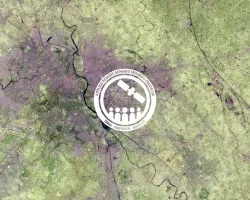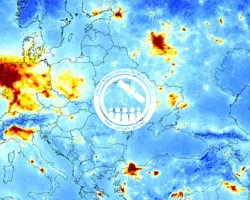Description
This training focuses on mapping and monitoring mangroves and how it relates to UN sustainable development indicator 6.6.1: Change in the extent of water-related ecosystems over time. Indicator 6.6.1 is used in determining progress toward meeting Sustainable Development Goal 6, which is to “Ensure availability and sustainable management of water and sanitation for all.”
Understanding mangrove ecosystems and mapping their extent is critical to meeting this goal. Mangroves are critical ecosystems, provide coastal protection from storm surges, maintain our climate, control floods, and stabilize coastlines. Additionally, they serve as nurseries for a number of marine wildlife species. Mangroves are also integral to the blue carbon family. Blue carbon is carbon stored, sequestered, or released from coastal vegetation ecosystems (Heer et al. 2012). Therefore, understanding mangrove extent and biomass is essential to managing the sustainability of our water ecosystems. Attendees will be exposed to the latest tools for mapping mangrove extent in Google Earth Engine and how these observations can be used to report towards SDG quotas.
Required Version of QGIS: 3.10 https://www.qgis.org/en/site/forusers/download.html
Download and Install Class Accuracy Plug-in for QGIS: https://github.com/remotesensinginfo/classaccuracy
** NOTE ** Once downloaded, open that zip file (classaccuracy-master.zip) and then zip the contained file without the README file.
For instructions for installation refer to this video: https://www.youtube.com/watch?v=NJRdKpmujRo
Required:
Optional:
By the end of this training, participants will:
- Understand Sustainable Development Goals with a focus on understanding SDG 6.6.1
- Understand the importance of mangrove ecosystems and the need for mapping them using satellite technology
- Have knowledge of spatial data that is available for studying mangrove ecosystems
- Use Google Earth Engine to:
- Map country-specific mangrove extent (Case Study: Guyana)
- Perform a time series analysis of mangrove ecosystems
- Calculate mangrove extent in hectares
- Build an app to display data using results from Guyana
National policymakers involved in sustainable development commitments to mangrove and water-related ecosystem conservation and the UN’s Sustainable Development Goals (SDGs).
- Three 90-minute sessions
Introduce Sustainable Development Goal 6, how mangroves serve as an indicator, and the basics of using remote sensing for mapping and monitoring mangroves.
Materials:
Materiales en Español:
Cover the basics of using Google Earth Engine, how to create a mangrove extent map using a Random Forest Classification, and create a time series for mangrove extent change.
Materials:
Materiales en Español:
Demonstrate creating country-specific applications and using GEE apps to communicate technical analyses to a non-technical audience.
Materials:
Materiales en Español:



